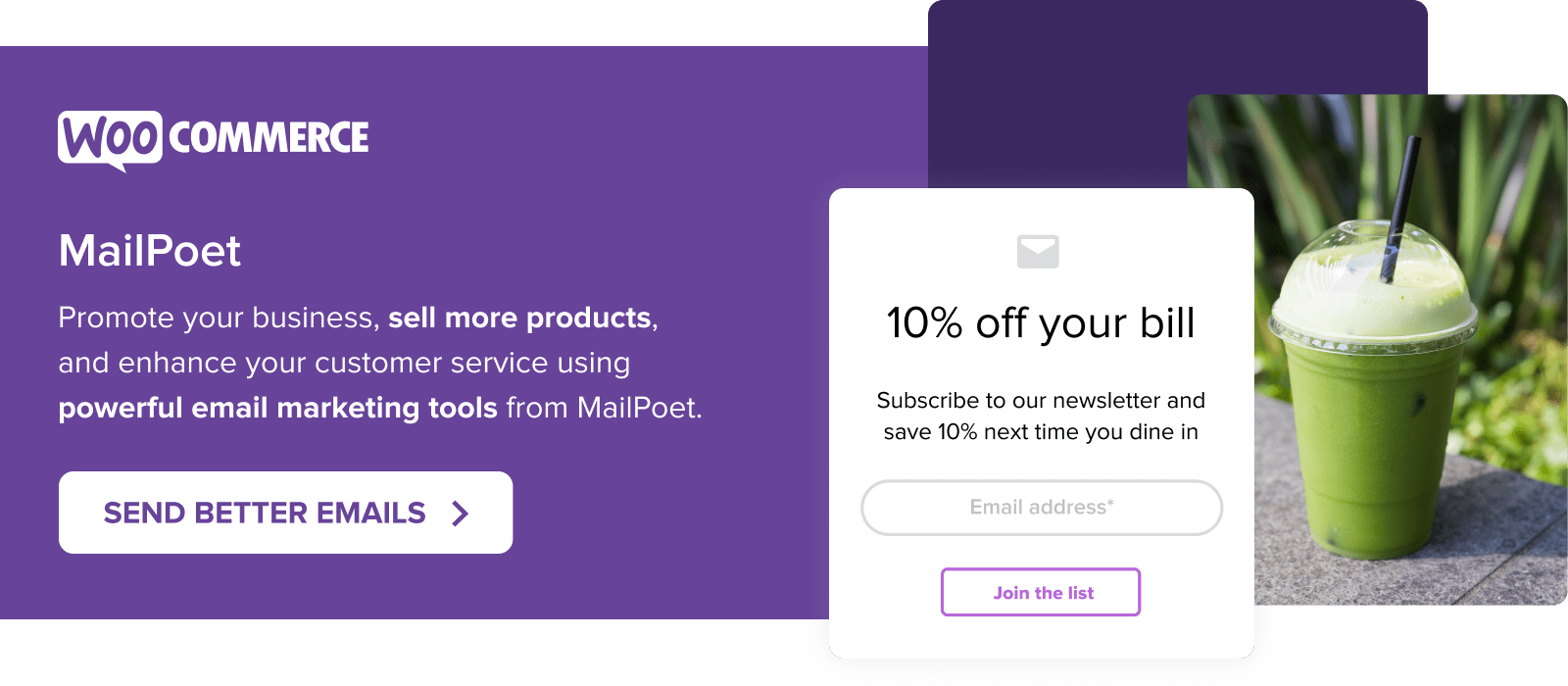Omnichannel marketing (also referred to as cross-channel or multichannel marketing) is focused on delivering a consistent, branded, and personalized advertising experience across the multiple platforms used by customers.
By using an omnichannel marketing strategy, your business can put ads in front of people for products that are relevant to their interests and purchase history. Matching potential customers with the right products and offers makes conversions more likely and increases the efficiency of your advertising spend. The lower your cost per acquisition (CPA), the more profit you get to keep.
Most of us have experienced omnichannel marketing in some way. You might click on an ad for something interesting you see on social media, then sign up for a coupon on the store’s website via a pop-up. If you don’t buy the product, you might get an abandoned cart email with a discount offer or you might continue to see display ads for the product on other sites you visit which might convince you to go back and make a purchase. If you do make a purchase, you’ll probably get an email with suggestions for related products and get future sale announcements. You may even get a postcard or catalog in the mail.
Sound complicated? The good news is that you don’t have to spend big money or dedicate a whole team of people to create a lean, yet effective, omnichannel marketing strategy for your store.
The following is a step-by-step guide to developing a simple omnichannel marketing strategy that won’t break your budget.
Start simple
There’s no way to start doing everything all at once, and thankfully, you don’t need to. Omnichannel marketing is just about reaching people with a consistent message in more than one place. So instead of trying to conquer some complicated automation campaign, begin by identifying your primary communication or marketing channel and then just one additional channel that you can integrate with it.
Set your budget
You’ve got to spend money to make money, right? Set a total amount per month that you’re able to budget towards marketing and then focus on the avenues that are likely to provide the best return on investment (ROI).
Not only should you consider how much money you want to spend on actual ad buys, but you’ll need to determine whether you’re creating the ad copy, images, and videos yourself or if you need to hire someone to do this for you. If you plan on reaching out to customers via email, then you’ll also want to consider how much money you’re spending on your email marketing platform. If you’re doing print advertising or direct mailers, you’ll need to get an idea of what those costs will be.
You may find that in the beginning, your budget is too small to advertise on all the platforms that you’d like to use. That’s okay. You can grow into new platforms over time. You might be surprised how quickly your business can scale if you start out by working efficiently within your budget.
Identify your target customers
Targeting your ads to people who are the most likely to buy your product is an important part of developing a good omnichannel marketing strategy. But how do you know who to target? If you’re starting your store from scratch, you might not have a customer base to survey. Instead, you can use some basic assumptions about your potential audience and then gather more data down the road.
Ask questions like:
- Where do they live? If you ship your product to limited countries, then you’ll want to limit your advertising to people in those countries.
- How old are they? If your product is designed for people over the age of 55, you’ll want to target shoppers in that age range.
- What is their occupation? If you sell orthodontic products, you can narrow your audience to dentists, orthodontists, and dental hygienists.
- What are their hobbies? If you sell kayaks, you might want to add people who enjoy kayaking, canoeing, fishing, hiking, and camping to your demographics.
Before you get too far into marketing, it’s important to understand who you want to reach.
Learn more about choosing an audience for your store.
If you’ve been running your store for a while and already have a list of customers, you can find out more about them by sending out a survey. If your customers have left reviews, you can read through them to gather demographic details and get an idea of how customers use your products. You can also use email addresses to create similar audiences on a variety of advertising platforms. Learn more about expanding your audience by learning from existing customer data.
Prioritize marketing throughout the customer lifecycle
The customer lifecycle starts when they first discover your business and ends, hopefully, in lifelong loyalty. Below are the five stages of the customer lifecycle and some popular methods for reaching shoppers at each one:
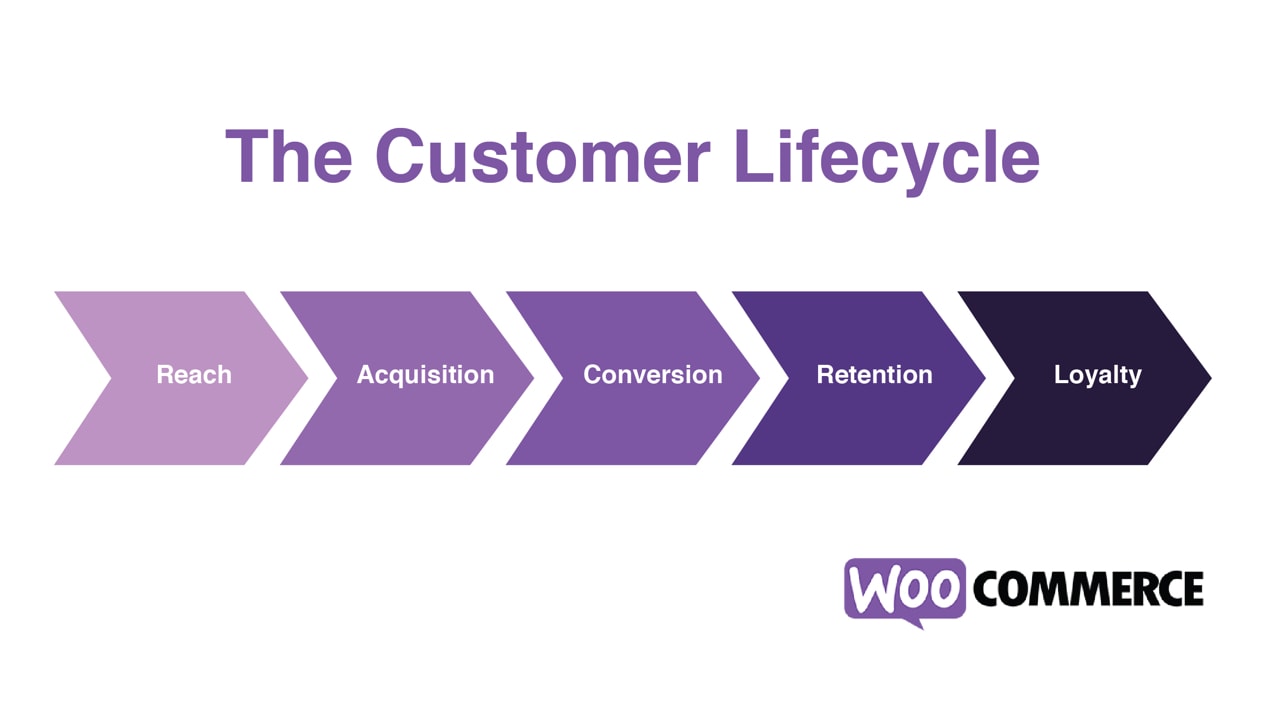
1. Reach
This is the stage where a customer is searching for a particular product or a solution to a problem. This is an opportune time for you to reach that shopper and make them aware of your brand. A customer may be comparing products, reading reviews, or just trying to find out more information about whether a product is the right fit for them.
Ways that you can reach the customer during this stage include search engine optimization (SEO), Google Shopping listings, paid search advertising, and social media marketing.
2. Acquisition
Acquisition happens when someone visits your website, signs up for your newsletter, interacts with your chatbot, or reaches out to your company by phone or email for more information on your products. They haven’t made a purchase yet, but are checking your business out and gathering more information.
During the acquisition phase, you have the chance to gather data on that customer which can help inform how you market to them down the road.
You can reach out to these people through remarketing, which uses a tracking tag on your website to gather some basic information and serve ads to them across various platforms. Some ways that you can use remarketing are through social media advertising, display ads, and abandoned cart emails.
You can customize the ads and emails your visitors receive based on the products they looked at and their on-site behavior. Prodding someone to come back to your site with a display ad or abandoned cart email with a discount can be a great way to move them to actually make a purchase.
3. Conversion
When someone makes a purchase on your site, they’ve “converted” to being your customer. At this point, you want to make sure that they’re happy with their product and experience and have a valuable relationship with your company going forward.
4. Retention
It’s not enough just to convert new customers. You want to keep your customers coming back again and again to make more purchases. The least expensive customer to convert is one that already loves your products. Not only does this have a better ROI, but cultivating repeat customers builds brand loyalty — and your loyal customers will be your biggest advocates through their reviews and telling their friends and family about your products.
At this step in the life cycle, you might market to your customers using follow-up emails with other product recommendations or special discounts, send them a request for a review or a feedback survey, offer a rewards or loyalty program, and provide excellent customer support.
5. Loyalty
Everything that you do to retain your customers helps to build brand loyalty. But you can’t just set it and forget it. You have to work to maintain your standards of selling high-quality products, having excellent customer service, and maintaining personalized connections through email and rewards-based programs.
To further cement allegiance to your brand, you might consider what you can offer your highest-value customers. With the WooCommerce Memberships extension, you can allow your VIP customers access to special benefits the rest won’t have access to. Offer them free products, special invites to in-person or online events like new product launches or creator/inventor talks, and free expedited shipping with every purchase.
Determine which advertising platforms are right for you
If you’re working with a small budget, you may want to be selective about which marketing platforms to focus on. Select low-cost advertising methods first, then expand into more costly advertising platforms as your budget grows.
Low-cost marketing methods:
Organic search
Focus on your site’s SEO. Your goal is to get your pages to rank well organically in search results so it’s easier for customers to find you. If you’re doing this work yourself, the only cost is your time.
Optimizing your site for organic search results helps it rank higher when shoppers are looking for the types of products you sell. Not only is showing up on the first page or two of Google search results a great way to get customers, it’s also a great way to start collecting data on the types of people that are interested in your products.
To make sure people find your store when they’re searching for products like yours, focus on using keywords on your product pages that customers search for. If your website includes a blog, publish useful articles about how to use your products. Google’s Keyword Planner can help if you’re feeling stuck on what keywords to use in your products, pages, and posts.
Google Shopping
Google Shopping is another great opportunity to show up when people are looking for you. In early 2020, Google made Shopping listings free, so there’s no reason not to list your products. Millions of shoppers visit Google daily to find the products they’re looking for. Although paid Google Shopping ads will always display above free listings, showing up high in the organic Shopping results can still be a big sales driver.
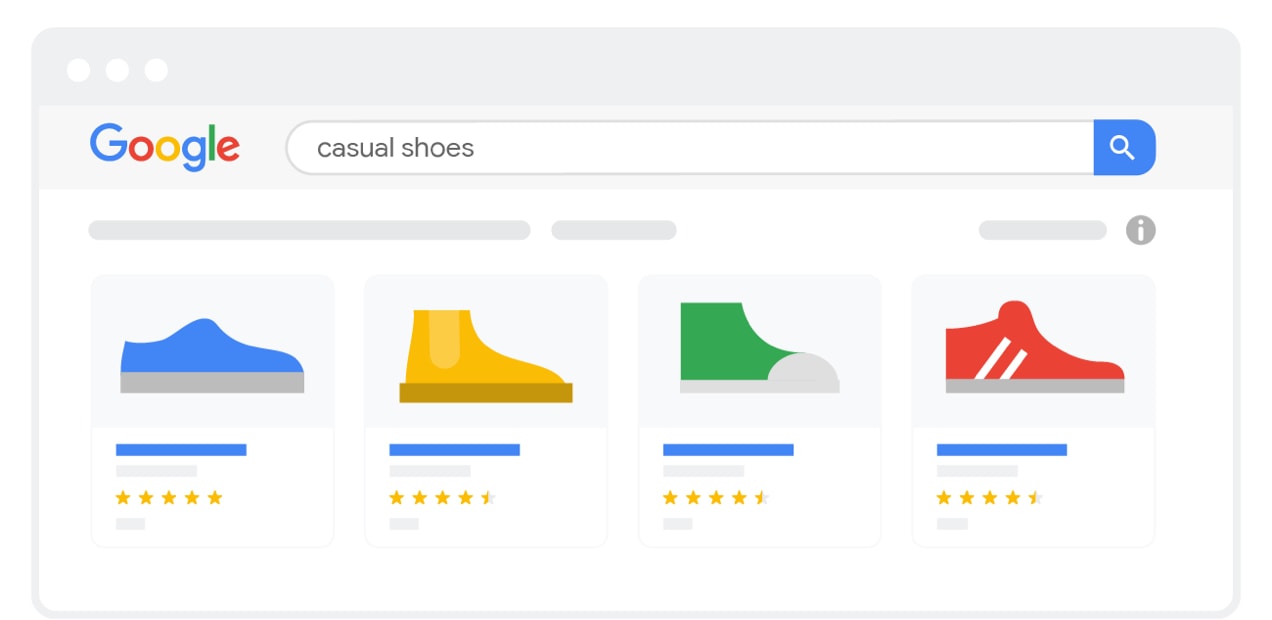
You can set up your Google product feed manually or you can install the Google Listings & Ads extension.
Email marketing
If you already have an existing list of customers, you can market directly to them via email. Many email marketing platforms have free tiers, so if your store is just starting out and your customer list is small, you can market to your customers at no cost. One great option is MailPoet, which was built with WooCommerce stores in mind and has the added benefit of including automated emails at the free level.
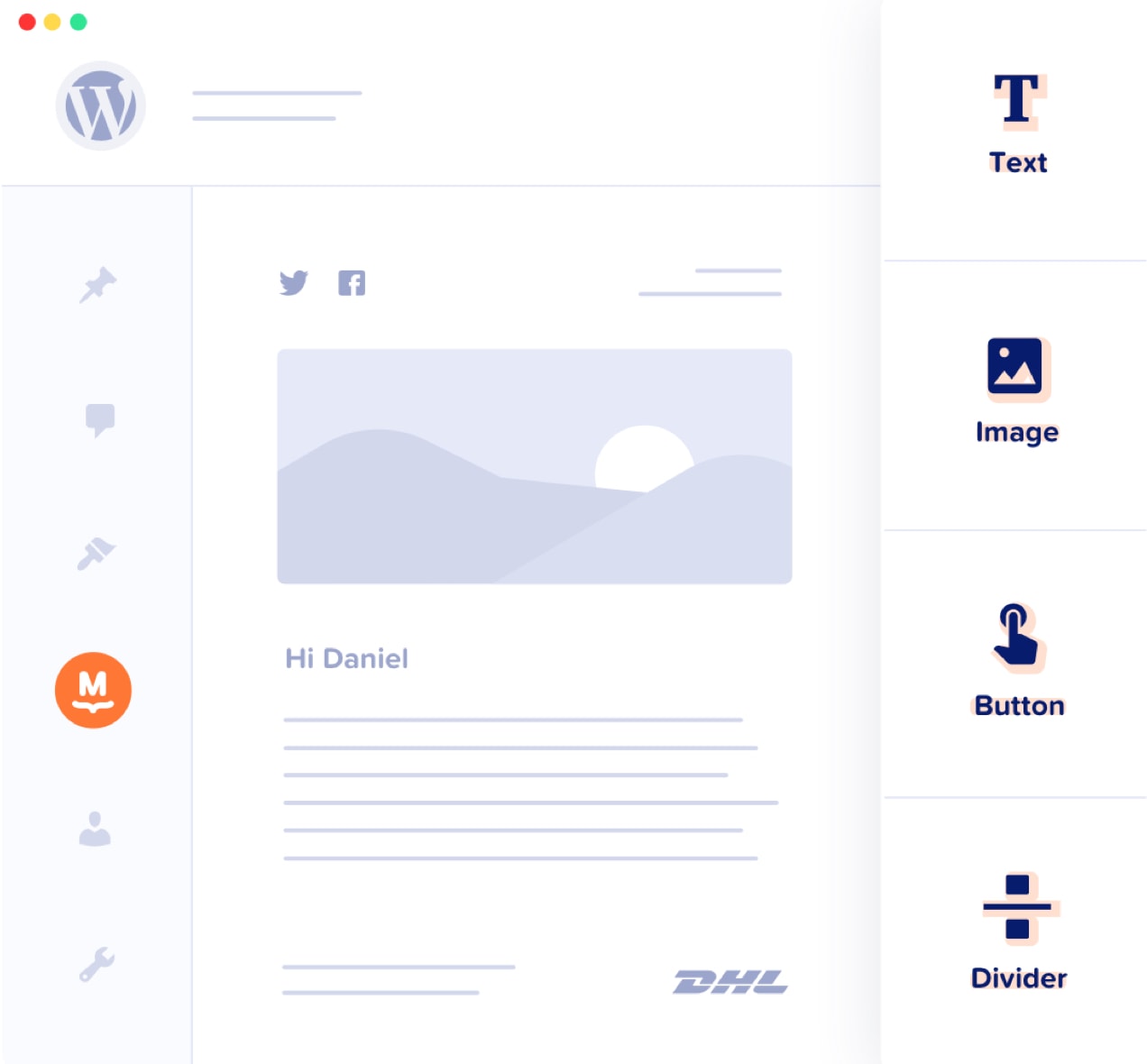
With services like MailPoet, you can send a welcome email series to new subscribers, product recommendations based on past purchases, abandoned cart emails to people who left items in their cart, sales announcements, and more.
Rewards programs
Encourage customers to buy more with a rewards program. With the WooCommerce Points & Rewards extension, you can set how many points customers can earn for each dollar they spend and how many points are required to get a reward.
Outside of adding new rewards or making tweaks to your program, it’s a marketing tactic that requires little additional effort or maintenance once your program is set up. If a rewards program makes sense for the products you sell, there’s no reason not to use one to help boost your sales.
Affiliate marketing
Affiliate marketing gives anyone the opportunity to become an ambassador for your brand. You only pay for your affiliates’ advertising efforts when they generate a sale on your site, so it can be a very economical way to increase revenue.
Affiliate marketing rewards fans with commissions for sales that they drive to your site through special links and coupon codes. Because your success benefits them as well, affiliates can be enthusiastic marketing partners.
If you’re interested in exploring this type of marketing, check out the Affiliate for WooCommerce extension. With this extension, you can set up your own program right in your store quickly and easily. Control signups, commission conditions, and payouts all from within your WordPress dashboard.
Be selective when choosing your affiliates. If they run spammy sites or publish content that search engines deem suspicious, it could potentially hurt your search rankings.
Customer service
Every touchpoint with customers is a marketing opportunity. Instead of looking at customer service as simply managing questions and complaints, think of it as an opportunity to create loyal fans. Make your customers feel valued by providing top-notch service. When they feel like you truly care about their satisfaction they’re much more likely to make future purchases and leave good reviews.
Using a customer relationship management (CRM) tool like Jetpack CRM can help make customer service smooth and easy. Set up a support portal, track and manage tickets, and more right from your WooCommerce store. There’s no need to log into a third-party CRM site to manage your customers — you can do it all from within your WordPress admin area.
Organic social media
It can be difficult to get organic attention on social media, but there a few good options for free marketing that can be quite effective:
Create a Facebook group for your business. Facebook pages don’t get much attention unless they engage in paid advertising. But Facebook groups can grow incredibly popular organically. Some brands have huge fan groups devoted to them, like the Aldi Aisle of Shame Community. In groups like these, brands can market to a loyal group of fans at no cost.
Post and interact regularly on all your social media channels. Tools like Jetpack can help you share your site’s latest content on a variety of social media channels, including Facebook, Twitter, Instagram, LinkedIn, and more. You can set your posts to be auto-shared across your selected platforms when they’re published or schedule when your content will be shared and re-shared.
You’ll still need to spend time interacting with your followers on social media, responding to comments and sharing other users’ posts that might be of interest to your fan base. High-quality, consistently published content must work together with regular engagement to grow your brand’s following.
Do an AMA on Reddit. The Ask Me Anything subreddit is a community dedicated to hosting question and answer sessions with interesting individuals and companies. It’s free to start your own AMA and you can answer as many questions as you like from participants. There are some proof of identity requirements and certain rules that your AMA must follow, but it’s otherwise very easy to set up and a fun way to reach new people. Plus, the questions that are asked may help inform how you market your product on other channels.
Higher-cost marketing methods:
Paid search
If you want to show up above the organic search results or generate immediate traffic while you improve your SEO, paid search ads are the way to go. You can bid on keywords or phrases that are descriptive of (or strongly related to) your products. For your ads to be successful, make sure they have useful descriptions and include as many structured snippets as you can (pricing, star ratings, reviews, etc.).
You should also ensure that your product’s landing page is mobile-friendly, loads quickly, and reflects the content of your ad copy.
Google Search is the most popular platform for paid search. With more than two trillion searches per year, Google far and away outranks the next most popular search platform, Bing, which only gets about one billion searches per month.
Paid Google Shopping
Like with Search, you can pay for better placement in Google Shopping results. Your sponsored ads will appear on the sidebar or in the top shopping carousel of Google Search and will also be listed at the top of the Google Shopping page. Paid shopping ads also get the benefit of being listed on Google Search Partner websites and being included in the Google Display Network (YouTube, Gmail, and Google Discover). Free Google Shopping listings do not get these added placements.
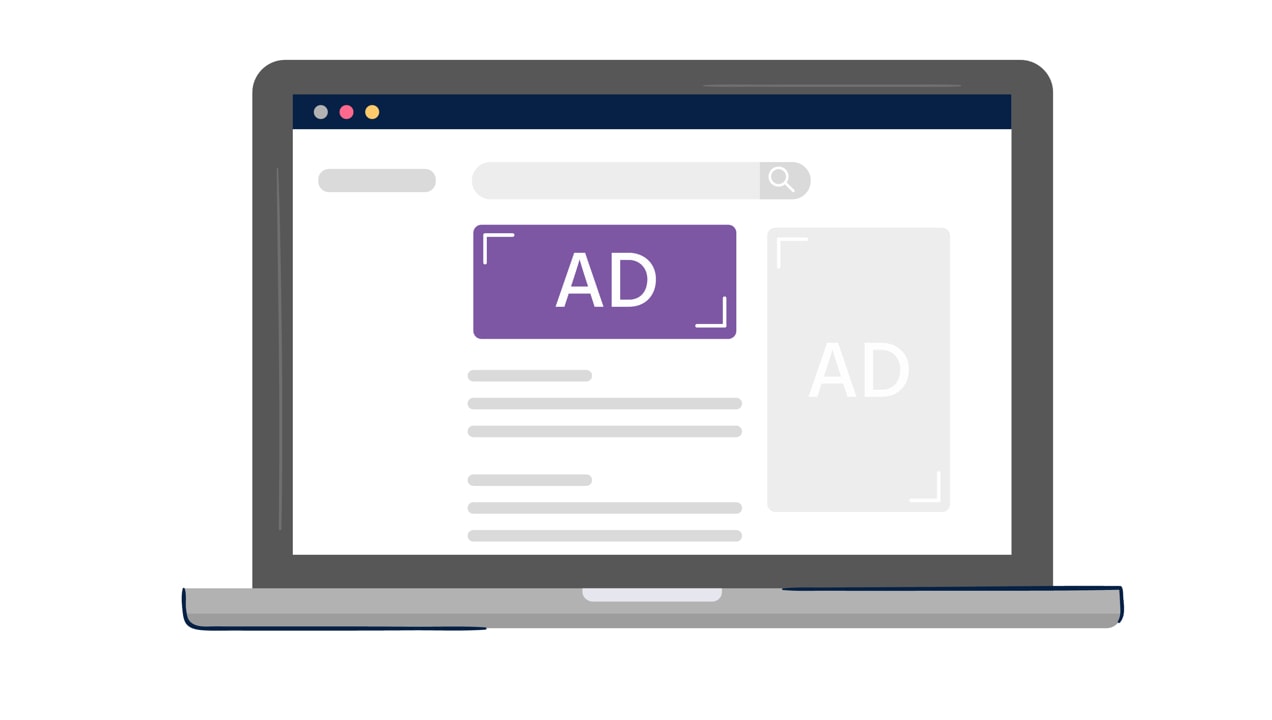
Display ads
Google Display Network is the most popular display ad platform in the world due to its wide reach. If you’re already taking advantage of paid search ads and Google Shopping ads, you might already be participating to some degree in the Google Display Network.
Social media ads
Marketing to people on social media is a great way to get new customers because they can directly share your ads with their friends. You can market to people by demographic data, perceived interests, or by uploading a customer email list to create a lookalike audience of people with similar profiles to your current buyers.
Facebook and Instagram are the easiest and most popular social media platforms for advertising. The first thing you’ll want to do is install the Facebook pixel and conversion API on your site and connect your store to your Facebook and Instagram accounts. The easiest way to do this is by installing the free Facebook for WooCommerce extension.
Facebook for WooCommerce connects your store’s product catalog to Facebook and Instagram so that you can ensure a unified, branded experience. You can also purchase ads directly through your WooCommerce dashboard.
Video ads
Between the cost to create high-quality video content and the ad buys themselves, video ads have historically been one of the more expensive marketing options. But with the advent of online platforms like YouTube and more affordable video production equipment and editing tools, video advertising doesn’t have to be out of reach for small businesses. You can film with your iPhone or Android phone, use free editing tools, and set your budget for your ad buys at whatever is affordable for you.
Even though video ads are far less costly to run than just a couple of decades ago, they can still be time-consuming and expensive to produce if you don’t have the time or skills to create them yourself. If you still want to use video as part of your omnichannel marketing strategy, make sure you create videos that can be used across a variety of platforms. Repurpose video clips for your social media marketing, blog, and product pages to get the maximum impact out of your video creatives.
While the most popular advertising platform for video is YouTube, you might consider other options:
- Social video platforms. TikTok and Snapchat are video-based social networking platforms that offer great advertising opportunities. They give you the opportunity to interact with viewers, which can lead to people forming a deeper relationship with your brand.
- Video live streaming services. Twitch and Vimeo are two big players in this space. Twitch is dedicated solely to live streaming while Vimeo also hosts pre-recorded content. Twitch is heavily focused on the gaming community so if your products would appeal to that demographic, it’s a great video advertising option.
- On-demand video streaming networks. The birth of online video streaming was thought to be the death knell of network television, but it really just created online networks. Amazon Prime Video and Hulu are two popular networks that offer advertising opportunities for businesses.
Print advertising
Depending on your demographic and the products you offer, print advertising may still be a great way to complement your digital marketing efforts. Consider taking out an ad in a magazine, mailing a printed catalog, sending postcards with special offers, or using front-door marketing techniques like door hangers and product samples.
Just like with digital marketing, there are things you can do to track the impact of your efforts:
- Use QR codes with tracking links. Some software allows you to create special tracking-enabled links for your QR codes. Include one of these codes on your printed marketing materials and when a customer uses it to visit your store, you’ll know exactly which printed piece that customer originated from.
- Use special landing page links. If QR codes aren’t your style, you can create custom landing pages with unique links to include in your printed ads. If shoppers visit that landing page, you’ll know which ad they have responded to in order to get there.
- Use a unique coupon code. If you include a coupon code that is unique to a particular print ad campaign, you can track its use in your store to get an idea of how effective your campaign is. Try WooCommerce Smart Coupons for advanced coupon management.
Create ad copy and artwork that can be used across multiple platforms
It’s important to be consistent and efficient. Not only does crafting your images, video, and ad copy with multiple uses in mind save you money on creative assets, it also helps to provide a unified, branded experience for shoppers across all platforms.
Make sure that you shoot videos and photos designed for multiple advertising platforms. Different platforms use different aspect ratios, so you’ll need to shoot and edit videos and photos with this in mind. Common aspect ratios include:
- Horizontal 16:9
- Square 1:1
- Vertical 4:5 and 2:3
- Full Portrait 9:16
Shoot your video and images at the highest resolution possible and export to lower resolution versions depending on your use case. High-resolution photos are important for print advertising and even some website applications (although always make sure to optimize your images for web display).
Lower resolution images are required for things like display ads. For videos, uploading the highest resolution file allowable is always best. Most video platforms have options for video quality on the viewer’s end so if someone has a slow connection, they can choose a lower quality video to be served.
Analyze your data
Regularly reviewing the results of your marketing campaigns across all your channels is critical. If an ad campaign is underperforming, there’s no use continuing to spend money on it without changes. Looking at your analytics will help you understand which ads are working and which aren’t and will help you know where to focus your time and money.
Google Analytics is probably the best and most comprehensive tool for tracking activity on your website. You can look at referral links that are used to visit your site so you can know where your visitors are coming from, get an idea of the effectiveness of search and display ad campaigns, and get demographic data on your site visitors. If you aren’t sure how to integrate your site with Google Analytics, the WooCommerce Google Analytics extension will help.
Not only will this extension connect your site to your Google Analytics account, it will show basic tracking data in your WooCommerce dashboard like sessions, users, and events. It also has the ability to integrate Google Analytics Enhanced Ecommerce so you can see customer behavior like cart actions and product views.
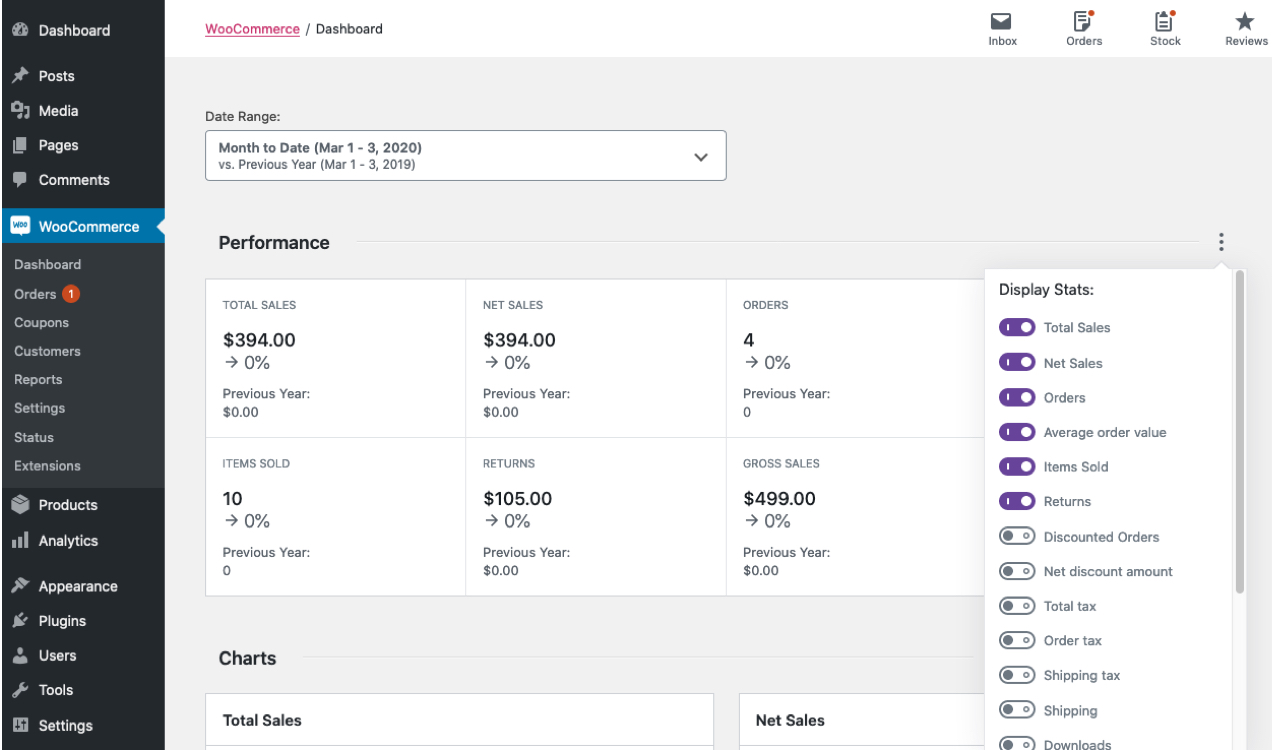
Other ways you can analyze your marketing data is through each marketing platform itself or in WooCommerce Analytics. Most email, video, and display network marketing platforms will have their own analytics dashboard that will at least show views and clicks. Some may even show conversions.
Learn more about tracking your marketing activities with advanced analytics.
Update your ad strategy based on your key performance indicators (KPIs)
After reviewing your campaigns’ performance, update your strategy based on your own KPIs. For most companies, ad campaigns with low CPAs and high ROIs should be given additional ad spend while campaigns with high CPAs and low ROIs should be retired. But you may have other performance indicators that are important to your company.
If you’re running ads that don’t result in direct sales but that regularly correlate with higher organic search traffic, it may mean that ad is causing a lot of people to search for and learn more about your products. Experiment with turning certain underperforming ads on and off for periods of time to see if they have any effect on other metrics.
For customer retention and loyalty campaigns, if you notice that few customers are taking advantage of their rewards points or aren’t redeeming certain coupons, you might consider tweaking your offer or adjusting the number of points required for redemption. Just because a marketing technique is currently underperforming doesn’t mean that it can’t be adjusted and turned into a high-performing sales driver for your business.
Watch your business grow
By being strategic in selecting your marketing platforms, crafting evergreen and repurposable creative assets, and constantly reviewing and adjusting your strategy based on performance, you will see your revenue grow. Like anything worth doing, it may take some time to perfect. By starting out with just a few inexpensive marketing channels and growing from there based on the data from your past efforts, you’ll develop a solid long-term strategy that works to build revenue for your business.

